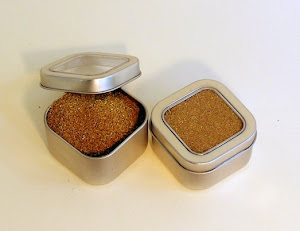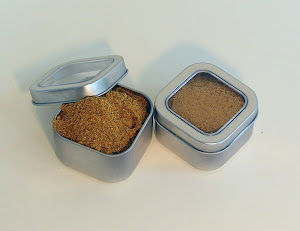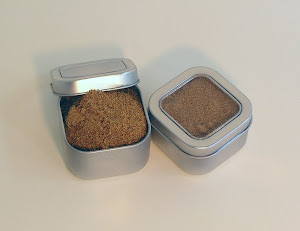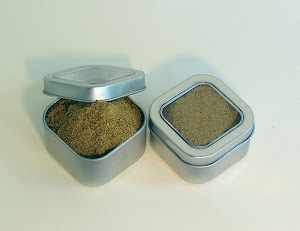Cooking is a lot like her dilemma. When it comes to creating a new Blizzard, well, how many new ones can you make? Do you go straight on and blaze new trail ways destined to go down in the annals of cooking while never looking back, stick with the familiar and trusted, or just hang it all up and go for take out? When it gets down to utilizing the common staples available in a region, what you get is a compromise between similarity and variety. Italian and Mexican food are great examples of this.
Don't get me wrong - I love Italian and Mexican food. As a kid growing up in Southern California, we had the best authentic Mexican food available, and it has always been on the top of my list of favorite cuisines. But with Mexican, you've got your meat, your rice, your beans, a sauce, some cheese, a tomato and onion salsa with some form of dough, either flour or corn, usually as a tortilla which serves as a large, edible eating utensil that also helps to keep all of the other stuff together in one place. My oldest sister, DonaRea, once made what I can only describe as "Mexican Manicotti" - manicotti shells stuffed with some sort of cheese filling and baked in a very spicy adobo sauce. The memory of that dish still lingers in my mind and occasionally I slip into what can only be diagnosed as a state of manicotti depression.
Italian is also right up there among favorite foods, only Italian as my mother made it, which, as Frank Zappa would say, isn't really Italian but the white people really like it. Who doesn't love spaghetti and meatballs, lasagna or macaroni and cheese? The only possible exception to this would be pizza, although pizza is really just zesty tomato sauce with some cheese and stuff on top of a very large unboiled noodle. After that, my favorite places to go out to dinner were either Chinese or Polynesian, which probably wasn't terribly authentic, but they had a variation of another stripe - jumbo shrimp or prawns with some sort of noodle or rice dish. (By the way, the theory has it that Marco Polo brought noodles back from China and bequeathed them to the citizens of Italy, who were eternally grateful. What, pray tell, did they previously use for a starch to bind it all? You can only do so much with risotto.) If you have ventured any distance into the soul of the culinary palate of a culture, you will soon find that they have a basic theme with lots of variations. It's the same, but different.
Last night's dinner was just such an example. We had a homemade first, an original variation on the Mexican dish which turned out to be a sort of nacho-lasagna-casserole thing. I'm thinking that it just might require a new sub-classification, like nachsagnarole. something like that. Except that sounds German. Any ideas?
In an effort to minimize time and energy expended on cooking dinner, I usually turn to the casserole for simplicity as well as comfort. Except it never really works out that way. Entropy quickly takes over and suddenly I'm using every pan and bowl in the house to cook and hold separate components of the whole meal structure, reusing them for the next stage as one becomes available. It becomes a 12 stage construction process and five hours later we have enough casserole for the rest of the month. In the end, I wasn't certain that the results would be all that impressive, but I have to say that it came out quite nicely, and perhaps that is why in Mexican cooking you have so many variations of the same thing.
Should you wish to try this yourself, be forewarned - it is going to take some commitment on your part. Maybe - just maybe - this one will have to go into the Double Wide Diner Cookbook.
Roasting Poblano Peppers (simulated)
I had actually tried to approach this with simplicity in mind, hence the use of canned ingredients as well as hamburger because, well, we were just in the mood for ground beef. (This is what we refer to as "going ghetto"). You can substitute fresh over canned, or any other meat in place of the hamburger. Chicken or pork would be really nice. For the vegetarians - yes, of course you can use vegetables instead. Either way, whether you prefer vegetables or something other than hamburger, you're on your own.
Here it is: Nachsagnarole, or the Nacho-Lasagna-Casserole thing.
Ingredients are for a casserole cooked in a 13" x 9" dish.
1 can of chunked tomatoes, seasoned if preferred
1 can of black beans, rinsed if preferred
1/2 to 1 cup of green olives, diced
12 to 18 tortillas, corn or flour, 8" to 10" in size (I used both)
1 onion, sliced thin
4 poblano peppers, fire roasted, cleaned and sliced thin (more on that soon)
1 1/2 to 2 lbs hamburger
1 to 1 1/2 cups cream - light or heavy, it's your choice. I used light
1 cup monterey jack cheese, grated
1 cup cheddar cheese, grated
1 bunch cilantro, cleaned and chopped well Approximately 2 cups or more if you prefer
Jalapeno peppers, de-seeded and diced. I used four very small pickled ones.
1 to 1 1/2 tablespoons of Mexican Sazón, whether my own from Etsy, from Goya or elsewhere.
Salt and Pepper to taste
Lightly coat the whole poblano peppers with olive oil and place them directly on the open fire of your stove top. Turn them occasionally to insure that they get roasted equally all over. You can roast them in the oven, but I find it easier to do it over the stove top. Place them in a container, cover it and let them sit for 40 t0 60 minutes. The heat will make the peppers sweat, allowing the charred skin to come off easily. Remove the charred skin thoroughly, unless you prefer a bit of char left on. It won't hurt anything. If you need to, wash the char off with a small amount of water. Too much water will remove the flavor from the pepper. Cut the peppers length wise and remove the seeds and the top stem, then slice them into thin strips.
Making the sauce:
This is a variation of a recipe called Creamy Rajas, which I think I originally found in The Silver Palate Cookbook
Cut the whole onion into thin strips. Heat a large pan or skillet to medium high with a tablespoon of olive oil, Add the onion strips and stir, cooking them until they are caramelized. Add the poblano strips, cream, cilantro, and salt and pepper, stirring to mix them all together. Bring the mix to just under boiling, add both cups of cheese and turn off the heat.
Cook the hamburger in a skillet at medium to high heat with a tablespoon of olive oil. Season the meat with Sazón, cilantro and salt and pepper. While browning the meat, break it up into smaller chunks with a spatula. If you prefer, strain the grease from the meat.
Now begin to build your casserole.
Cut six tortillas in half. In your 13" x 9" dish, layer them with the edges lined flush with the dish edges and place one whole tortilla to cover that gaping hole in the middle. Put half a can of the tomato chunks evenly over the tortillas, then a layer of meat, then half the can of beans and half of the olives evenly across the meat. Press the layers down and then add half of the poblano and onion cheese sauce. Repeat again except skip the cheese sauce. Place the final layer of tortillas over the top. You may have to use more tortillas as the top layer will be larger than the bottom layer. Press the ingredients down, add the diced jalapenos into the remaining cheese sauce and spread evenly over the top.
According to my recipe process, you should have 1 13" x 9" casserole with no remaining left overs. If you have any left over, do something with it. Sneak it into the built layers of the casserole or make a mini one.
When you are ready to bake it, cover it with aluminum foil and place in a pre-heated oven at 350 degrees. Since the casserole is already "cooked", it really just needs to be heated thoroughly. Bake for approximately 30 to 40 minutes.
Cut into portions and serve with salsa, sliced avocado and a dollop of sour cream. Share with someone you love.
Bon Appétit!












1 comment:
How about a "Layered Nachismo"?
karen
Post a Comment